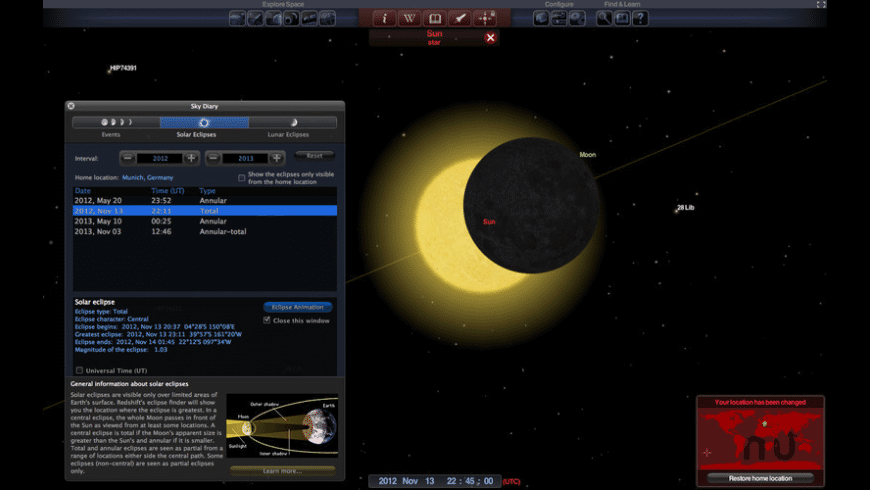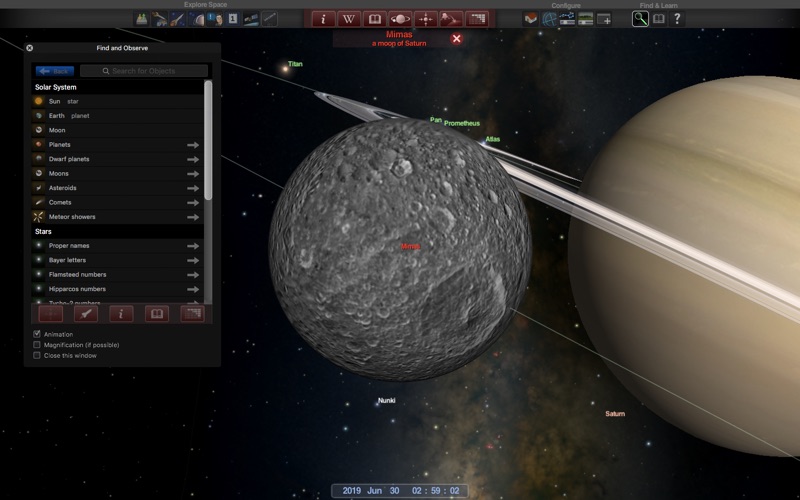

When researching an object to observe, or when you want to find out more about an object, there’s often a Wikipedia page about it which gives you a lot of good information about it. But with millions of objects visible in the sky there’s not always a Wikipedia page and so you are left to research the object on your own.
A search on Simbad can yield a lot of good information about an object and I discuss the basic use of Simbad here: Understanding Simbad. I do mention in that post that you can convert a redshift value to a distance. But what is redshift and how does it indicate distance?
Before you understand redshift, you need to understand the Doppler Effect.
GN-z11's redshift was 11.1, much higher than the next-highest redshift of 8.68 measured from galaxy EGSY8p7. Scientists can use redshift to measure how the universe is structured on a large scale. Download Redshift Premium - Astronomy for macOS 10.7 or later and enjoy it on your Mac. Explore space with the multiple award-winning professional planetarium software, Redshift. View the night sky in unparalleled clarity, travel right through our galaxy and beyond, and look at planets, moons, asteroids, nebulae and other celestial bodies. Planets, moons, and stars - when you’re exploring our galaxy with Redshift Sky Pro, no celestial body remains hidden in the darkness of the night. The app takes you to a whole new level of astronomy. Discover fascinating celestial objects and learn more about them in the Redshift database. See what’s going on in the sky tonight or travel through time and watch how the constellations change.
Most of us have had the experience of hearing the pitch of a siren change from a high shrill (high-frequency, short wavelength) to a low blare (low frequency, long wavelength) as the ambulance, fire truck, or police car approaches and recedes:
This motion-induced change in the frequency is known as the Doppler Effect, named after Christian Doppler, the 19th century Austrian physicist who first explained it. Applied to cosmic sources of electromagnetic radiation, it has become one of the most important observational tools of modern astronomy.
The preceding figure showed how the Doppler effect works when the source of the sound is moving. As the ambulance moves toward you, its frequency is higher because both the ambulance and sound waves are moving towards you. As the ambulance passes and moves away from you, the frequency of the sound becomes lower because the ambulance and the sound waves it is producing are moving away from you.
Like sound, light also behaves as a wave. When we hear a higher-pitched sound, the wavelength of the sound is shorter and when we hear a lower-pitched sound, its wavelength is longer. Light changes color as its wavelength changes, as shown in the following diagram:
Longer wavelengths are toward the red end of the spectrum of light, and shorter wavelengths are toward the violet end of the spectrum of light.
Instead of the ambulance in the preceding scenario, imagine that it is a star and that it is not moving either toward or away from you. You could look at the star and see the light coming from it. You could use a spectrometer, a device that measures the wavelength of light, to determine the color of the light coming from the star.
If the star is moving toward you, like the ambulance in the first image of this article, the wavelength of light would become shorter because the star and the light it is emitting is moving toward you. Based on the second diagram in this article, shorter wavelengths are shifted toward the violet side of the spectrum of light.
If the star is moving away from you, the wavelength of the light would become longer and so be shifted toward the red end of the spectrum of light.
As you just learned, longer wavelengths of light are toward the red end of the spectrum of light. When astronomers observed objects like stars or galaxies, they analyzed the light coming and found the colors tended to be towards the red end of the color spectrum.
The amount of shift was not constant and further research showed that the amount of redshift correlated to distance (the redshift actually indicates that the object being observed is moving away from us; however, we are also moving and so we can calculate how fast an object is moving away from us and from that calculate the distance the light from the object traveled to get to us).
In another tutorial, I had you research NGC 936 using Simbad where we found that the redshift of that galaxy is z=0.004096 (redshift is denoted using the lowercase letter z). So how do you convert that value of z into a distance?
Before I get into explaining how to convert the value of z into a distance, you need to understand that distance is an approximate estimate so you’ll find there are some discrepancies between sources. This is common as there’s not one absolute distance since the universe is expanding, everything is moving, and the calculations to measure the distance vary. But the result you get is reasonable enough, assuming you’re not doing professional or academic level research.


You can take great astro photos using Slooh.com – a remote telescope service with great locations around the world.
I wrote a free book about using Slooh.com, image processing, and more and it’s available for free here. Taskpaper 3 7 5 – simple to do lists.
There is a formula that does the conversion from redshift to distance but it’s rather involved so there are a couple of websites you can use to help you with the conversion. There are a couple of websites that do the conversion because they approach the calculation differently.
The first website is Ned Wright’s Javascript Cosmology Calculator here:
When you see this page, it looks pretty confusing because you can customize how the calculation occurs; however, the defaults are good enough for our purposes.
Enter the value of z in the third box from the top on the left side of the page, as shown:
To perform the calculation, click the Open button. The Open button performs a calculation where certain assumptions are made. You can click the Flat button as well yet the calculation results in almost the same values for our purposes.
The result is shown on the right side of the page and the value we’re interested in is the comoving radial distance, the fourth item in the result. In this case the commoving distance 0.057 Gly, or 0.057 giga light years. You can convert the distance to millions of light years by multiplying by 1,000 so you get 57 million light years from this calculator.
Let’s try another calculator, Cosmological Calculator for the Flat Universe by Nick Gnedin , here: https://home.fnal.gov/~gnedin/cc/
This calculator approaches the calculation a little differently yet is still accurate.
Enter the value of z in the first box on the left, as shown:
Cleanmydrive 2 3 download free. Click the “light years” radio button on the right. Then click the link “Luminosity distance” link under the Functions list.
The page displays the result and what we’re interested in is “Luminosity distance” and in this case, it is 72.21 Mlyr, or 72.21 million light years.
Compare these calculated results with the distance you get from Wikipedia which says about 67 million light years, plus or minus about 20 million light years, so the results of the calculations we have here put us within that range.
As I mentioned, distances are not absolute and the results we have here are useful enough since we’re not doing academic or professional level research.
In this article, you learned about what redshift is, how to find it, and learned how to convert it into a useable distance estimate. It took me a long time to figure this out and I hope I helped save you some time.
Ready to try Redshift? Register now to download the latest demo of Redshift. Your coffee breaks are about to get much shorter.
Prior to purchasing Redshift, we encourage all interested customers to try the Redshift demo version to ensure system compatibility and experience Redshift's amazing performance.
You must be registered to download the Redshift demo.
Already registered? Login to your Account
